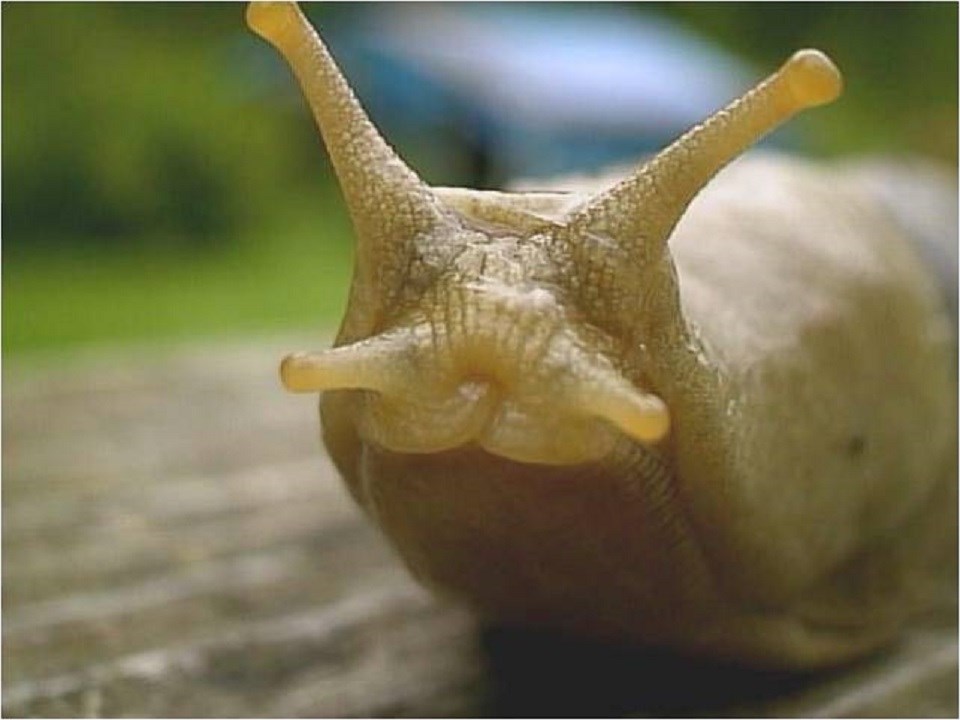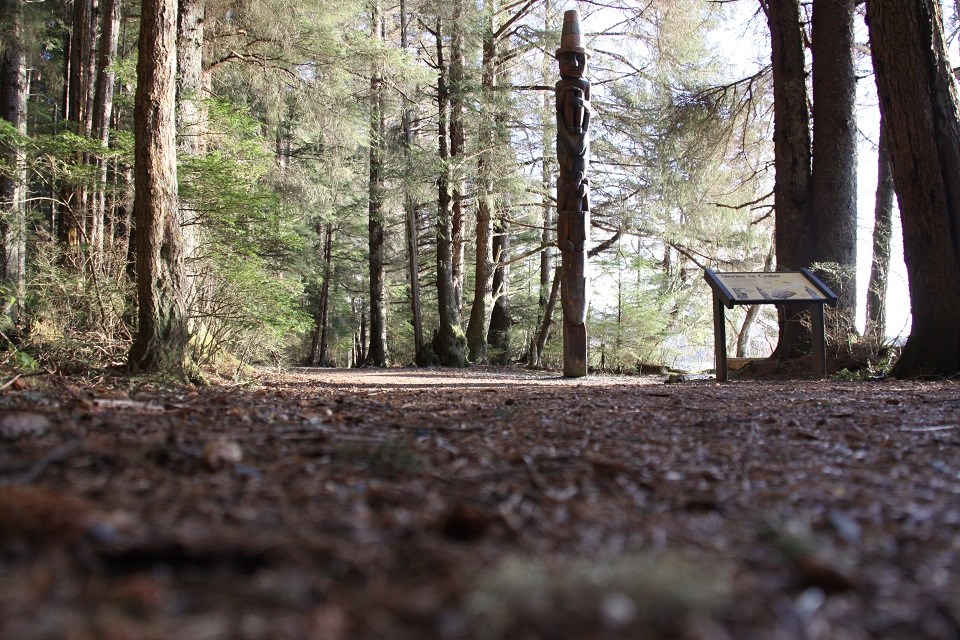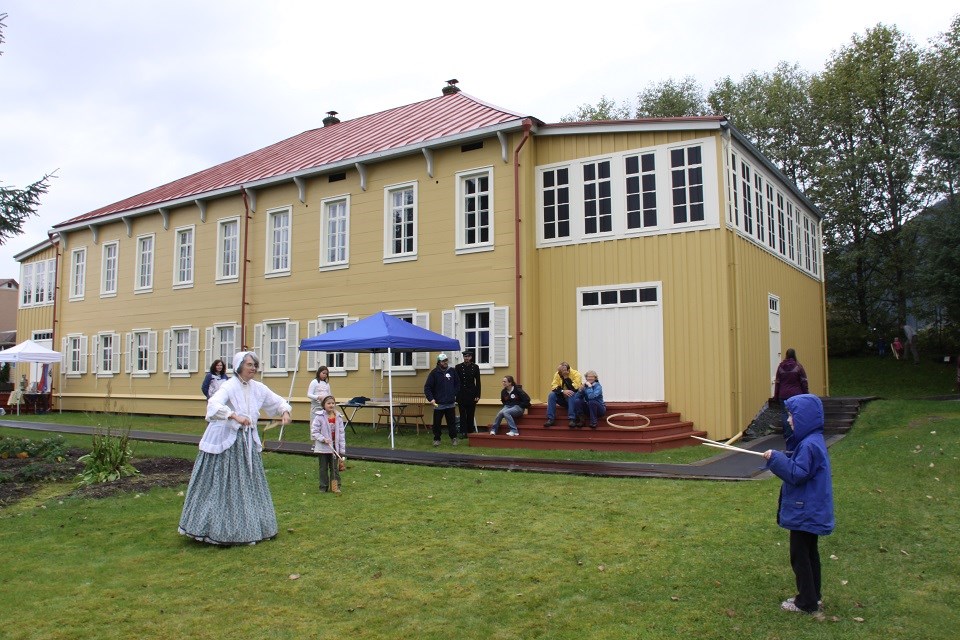Last updated: October 26, 2021
Article
National Park Getaway: Sitka National Historical Park
By Dusty Kidd, Lead Centennial Planner, Sitka National Historical Park; revised and updated by Brinnen Carter, Resource Program Leader, Sitka National Historical Park

NPS Photo
Hi. I'm a banana slug. I rock across my home landscape—the 113 acres of Sitka National Historical Park—at .006 mph. This place is hog heaven to me. I'll show you around. But first, let's talk about me. Did you know I'm a loner? I love beer? I hate copper? Hey, I have my own website! There’s even an artificial slug that moves and slimes just like me. It's from MIT, of course.
So, let's take a tour. We are Alaska's oldest national park, having celebrated our centennial year in 2010. People flock to Sitka from May to September, drawn by our world-famous collection of totem poles and the Native artist demonstrations at the visitor center, our visitor center partner. The artists make bracelets and shields, and carve maks and even full-scale canoes and totem poles featuring ravens, eagles, salmon, wolves, bears, and beavers. (Alas, no slugs.) In fact, the newest carved item is a 26-foot red cedar canoe now being used by the Sitka Tribe in Alaska!

NPS / Tom Gamble
Follow me down the park's forested Totem Trail. A couple of touring tidbits: Did you know that a local teacher once accidentally burned a totem pole to the ground? Or that the “low man on the totem pole” is good, not bad? It actually means you are strong enough to hold up all the other figures on the pole! Our Trader Legend Pole features a cheat, who is ridiculed in 35 feet of cedar. He's high man on that totem pole. I just love the soft, moist ground. Hey! Watch your step!
Sitka National Historical Park was created to preserve the site of the Battle of 1804 between Russian forces and the Tlingit, the Alaska Native tribe that has lived here for literally thousands of years. The Totem Trail was assembled by E.W. Merrill in the early 1900s to make the trip to the battlefield and Tingit Fort site more beautiful. With all those wet spruce needles, it is a piece of cake to slide down there.
The park sits in the world's largest temperate rain forest, with Indian River running through to the Pacific Ocean. We have lots of rain—sometimes more than 100 inches in a year. We also have hemlock and Sitka spruce trees, alders, mountain ash, Devil's Club, and skunk cabbage. This park is paradise to me. I don't even need a shell to stay moist like those silly snails.
Other creatures like the park too. (And find me tasty. Ouch!) Squirrels, shrews, and voles slip through the brush. Nesting bald eagles soar above. The raven squawks in 30 voices. The snowy owl and peregrine falcon join 159 other species of waterfowl and nesters along the estuary. Yet even among predators, I'm relatively safe. Speed is one of my defenses! (I move so slowly I am hard to detect.)

NPS Photo
In August, the pink salmon (“humpies”) fight tides, river current, and each other to reach prime spawning beds. I can sense them, and I positively can't miss Ursus arctos sitkensis, the Baranof Island brown bear, as she rumbles around my park, fishing and chomping on blueberries. A genetic oddity, she's actually more closely related to the polar bear than to other brown bears.
The Russian Bishop's House is our second park unit, one of only four buildings remaining from the Russian colonial era in the Western Hemisphere. Located in the heart of Sitka about a half-mile from the visitor center, the “RBH” is restored to its original 1843 condition. It features many original furnishings and a garden planted after the Russian practice—rows and rows (did I mention rows?) of potatoes, carrots, and leafy vegetables. Hey! Look who's loafing under the kale! That's my cousin, Mario. Maybe he'll give you a tour!
